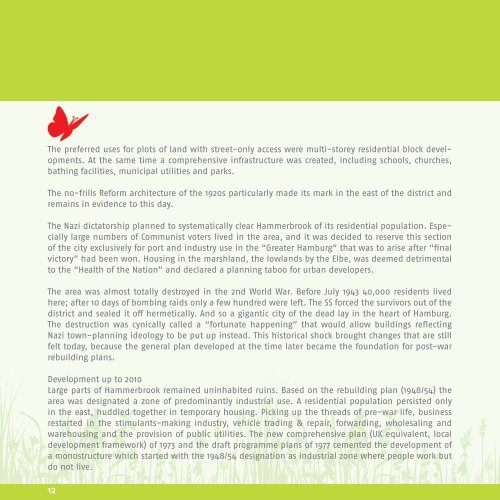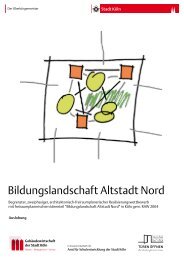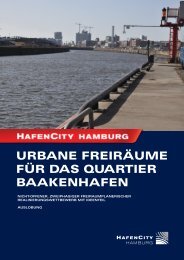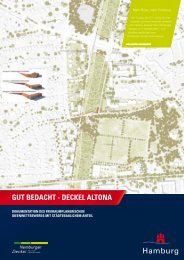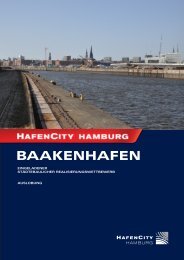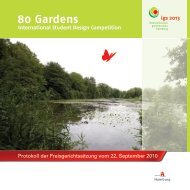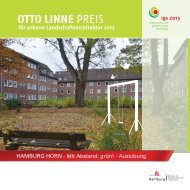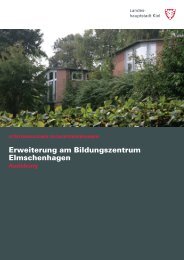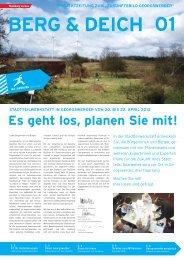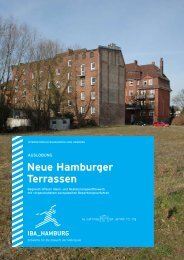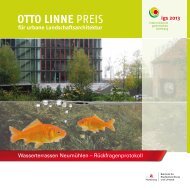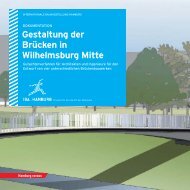OTTO LINNE PREIS - luchterhandt
OTTO LINNE PREIS - luchterhandt
OTTO LINNE PREIS - luchterhandt
Create successful ePaper yourself
Turn your PDF publications into a flip-book with our unique Google optimized e-Paper software.
The preferred uses for plots of land with street-only access were multi-storey residential block developments.<br />
At the same time a comprehensive infrastructure was created, including schools, churches,<br />
bathing facilities, municipal utilities and parks.<br />
The no-frills Reform architecture of the 1920s particularly made its mark in the east of the district and<br />
remains in evidence to this day.<br />
The Nazi dictatorship planned to systematically clear Hammerbrook of its residential population. Especially<br />
large numbers of Communist voters lived in the area, and it was decided to reserve this section<br />
of the city exclusively for port and industry use in the “Greater Hamburg” that was to arise after “final<br />
victory” had been won. Housing in the marshland, the lowlands by the Elbe, was deemed detrimental<br />
to the “Health of the Nation” and declared a planning taboo for urban developers.<br />
The area was almost totally destroyed in the 2nd World War. Before July 1943 40,000 residents lived<br />
here; after 10 days of bombing raids only a few hundred were left. The SS forced the survivors out of the<br />
district and sealed it off hermetically. And so a gigantic city of the dead lay in the heart of Hamburg.<br />
The destruction was cynically called a “fortunate happening” that would allow buildings reflecting<br />
Nazi town-planning ideology to be put up instead. This historical shock brought changes that are still<br />
felt today, because the general plan developed at the time later became the foundation for post-war<br />
rebuilding plans.<br />
Development up to 2010<br />
Large parts of Hammerbrook remained uninhabited ruins. Based on the rebuilding plan (1948/54) the<br />
area was designated a zone of predominantly industrial use. A residential population persisted only<br />
in the east, huddled together in temporary housing. Picking up the threads of pre-war life, business<br />
restarted in the stimulants-making industry, vehicle trading & repair, forwarding, wholesaling and<br />
warehousing and the provision of public utilities. The new comprehensive plan (UK equivalent, local<br />
development framework) of 1973 and the draft programme plans of 1977 cemented the development of<br />
a monostructure which started with the 1948/54 designation as industrial zone where people work but<br />
do not live.<br />
12


